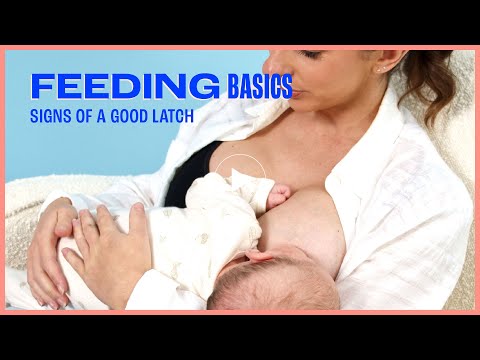-
Make yourself a weaning tea. A blend of dried sage, peppermint and parsley will help reduce production of breastmilk. Get these from your local health food store or online.
-
Journal through the experience or make some artwork about breastfeeding – either alone or with your children. Having a creative outlet through the process can help to lighten the emotional load.
-
You may need to hand express to alleviate discomfort or engorgement. Do this in a nice, warm shower. You can also use cool breast packs or cold cabbage leaves in your bra for comfort.
-
Support your nervous system and honour your body by taking time to slow down, laugh, cry and process the process. Take walks in nature, have a bath, do some gentle yoga, watch shows or movies that make you feel good, connect with your partner and other mothers, and talk about your experience. You can do all of these with your baby to help you feel connected.
-
If you are experiencing intense emotions or physical symptoms, connect with a qualified health practitioner to support you, including an IBCLC, counsellor or psychologist, Naturopath etc.
How to make it a smooth transition for your body and your babe.
Weaning. It’s a topic that’s spoken of very little and a major life transition that comes with just as little support. Many breastfeeding and chestfeeding people don’t know about the hormonal changes that take place when we wean, and the feelings of loss that can accompany the newfound sense of freedom gained when you have your boobs back. Your body has just completed the enormous feat of nourishing a whole other human for months (if not years), and there is very little honour given to the momentous physical and emotional task that breastfeeding entails. Breastfeeding takes time, self-determination, resources, dedication and mountains of support. Your nutritional requirements are higher during lactation than at any other time in your life, and as a result your body can become depleted (as can your breast milk) if you don’t fuel it with adequate wholesome food and nutrients. The physical time and energy that is given to feeding your baby every day and night often results in exhaustion, feeling ‘touched out’, a dive in your sex drive, an intense juggle between work and family life, and the missed opportunity for intimate and social connection.
For some, breastfeeding is a breeze. It’s a straightforward and pleasurable experience that lasts for years, and the choice to end the journey is made by baby when they are ready to wean, or by the mother when they feel emotionally prepared. For others, the road can be difficult, painful, short-lived, expensive (both on their wallet and mental health), come from a lack of support and resources or a place of necessity as mothers return to work, experience low milk supply or breast health issues. The eventual decision to stop feeding can be loaded with emotions, ranging from guilt, to sadness, to relief, to feelings of freedom, and the lightning of a very heavy load.
No matter how long you breastfeed, you have given your baby the gift of nourishment, connection and love, and that is something to be so proud of. For whatever reason you choose, need or want to wean, there are many ways to make it an empowered and supported experience that leaves you feeling connected with your baby. As a Clinical Naturopath and Postpartum Doula, I support mothers on both a physical and emotional level through their breastfeeding experience, and often consult with busy, tired and depleted mums who need some gentle guidance and support with holistic nutrition, quality supplements and herbal medicine as they transition their babe off the breast. So here's what you need to know.
Categories of Weaning
Weaning can happen for a multitude of reasons, and the decision to do so is sometimes guided by the mother, sometimes by their baby, and in some cases, both!
Baby-led weaning can mean either allowing your baby to eat solid foods in their own time, or allowing them to move away from breast milk in their own time. This is an intuitive style of weaning, as it allows your baby to outgrow breastfeeding on their own, at their own pace. For mums who have adequate milk supply to keep up with their baby or toddlers demands, this can seem like the most natural and emotionally supportive approach to move on to the next phase with their child. When solids are introduced to a baby around 6 months, some love food so much that they take themselves off the boob all by themselves to make way for their new found hunger and independence. For others, the combination and nourishment of flavoursome food and the comfort of breastmilk and feeding time lasts for months, if not years after introducing solids, and mums may then need to guide their baby to wean when it feels right for them or needed (also known as mother-led weaning).
Mother-led weaning, also known as ‘planned weaning’, describes when a mother chooses to wean and stop breastfeeding before her child does. There are so many reasons for mothers to initiate weaning, including low milk supply, discomfort during feeds, returning to work, being pregnant again, wanting to have their body back to themselves, feeling exhausted, emotionally drained and depleted, needing to take contraindicated medications or have breast surgery…the list goes on. For some, the decision is made quickly and comes from a place of necessity, and for others, it can take weeks or months to come to terms with ending their breastfeeding journey. The important thing to remember is that your breastfeeding journey is your own, and you should never be judged for making a decision that feels right for you and your family. You and your child will work things out in your own time.
How Weaning Effects Your Body
Weaning is a whole body affair. On a physical level, breasts are changing size and shape and can become engorged, painful and clogged ducts or mastitis may occur as the breasts adjust to not being drained by your baby or pump, and start to downregulate milk production. As breast milk production slows, your milk ducts are no longer full of fluid, and so your beautiful boobies will likely start to shrink in size. With the reduction of fullness in your breasts, skin may tighten to fit your new boob size, but for some mums, tissue and skin elasticity may be reduced from the breastfeeding journey, and sagging may occur.
From the moment your baby latches after birth, and every time they feed thereafter, the body initiates a genius hormonal feedback system between your nipple and the brain to create breast milk. A rise in both oxytocin (the love and connection hormone) and prolactin (the breast milk producing hormone) every time you feed keeps breastmilk production flowing.
When you or your baby starts to reduce feeding or pumping, your body produces less and less oxytocin and prolactin, which not only reduces the amount of milk being made, but can also reduce feelings of contentment and calm, which may leave you feeling more sensitive and like you are having an emotional ‘come-down’.
The severity of this hormonal drop differs for everyone, and can bring up a kaleidoscope of big and little feelings. Emotions can range from mild to feeling depressed and even suicidal, so please check in with your partner, family, friends, and qualified health professionals, who can support, encourage and hold you through the transition.
Pumpings Part in Weaning
As with breastfeeding, pumping initiates the hormonal feedback system of breastmilk production, which is something to be mindful of when you are wanting to slow your flow.
I recommend gradually decreasing your pumping sessions, as going cold turkey can increase discomfort and risk of engorgement or painful breast issues while the body keeps trying to make milk to feed your baby (the same goes for stopping breastfeeding quickly) . Consider progressively reducing the time you spend pumping during your daily sessions by a minute or two each time, and dropping a pumping session every few days to allow your breast milk supply to gradually decrease.
How to Start Weaning
I’ll start by suggesting that the first feed you drop should probably not be the first feed of the morning or the last feed of the day when your child is going to bed. This is because these feeds are often the most comforting for your baby or toddler from a connection perspective - and may be the most rewarding for you as you connect with your child first thing in the morning or after a busy day. Stopping this might be the most emotional part of weaning for you both, and the most important thing is that weaning feels intuitive and that you are supporting both you and your baby's nervous system on the journey to make it a smoother transition.
It is often easier for mums to start the weaning process overnight, as this is when baby’s and toddlers can go longer without milk (and you will also reap the benefits of more sleep). Much like reducing pumping, it can be much gentler on your body and your baby to begin by slowly shortening one feeding session, gradually by a minute or two each time, until that one feeding session is dropped entirely. You can then choose another feeding session to shorten and then drop, and so on, until both your baby and your breasts become used to not having as much milk through the day and night.
How Long Weaning Takes
Again, weaning is such a personal experience and the time it takes for you to be sure that you are done with your breastfeeding journey can take a few days for some, and unfold over the course of months for others. In general, except for some medical reasons, it is recommended to take a gradual approach if you can, as stopping quickly can increase the risk of engorgement, and your baby may intensely resist the sudden change. Go with your gut, move at a pace that feels right for you, and seek out support from an International Board Certified Lactation Consultant (IBCLC) if you have questions or need some guidance.
TIPS FOR WEANING
FOR YOU

FOR YOUR CHILD
-
Speak to them about the transition. If your weaning journey requires you to have a short separation from your child, and they or you are going away for a weekend, tell them that when you see them again there will be no more milk.
-
Get them a special drink bottle, perhaps in their favourite colour or with their favourite characters on it. Tell them that when they want mama’s milk they can drink from their special bottle instead.
-
Put bandaids over your nipples so they get the visual reminder that there is no more milk.
-
Wear a necklace for them to play with while they cuddle you, in place of boobs in mouth.
-
You may also wish to undertake a ritual together, to mark and honour the end of your breastfeeding relationship, such as baking a cake or planting a tree. While you are doing this, talk to them about your breastfeeding journey, how much you’ve loved it, why you are ready to stop, and thank them for breastfeeding with you.











































































































